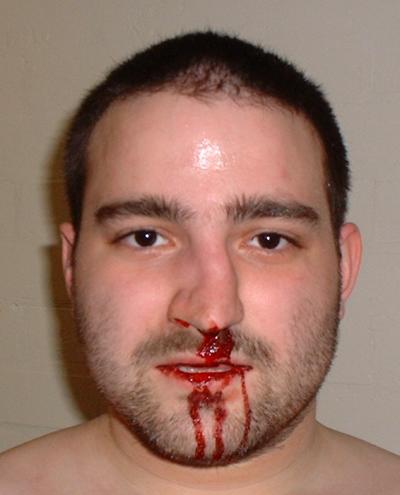Nasal fracture: Difference between revisions
imported>Nancy Sculerati MD No edit summary |
imported>Nancy Sculerati MD No edit summary |
||
| Line 3: | Line 3: | ||
At any age, a break in the nasal bone may be of little consequence. Unlike the arm or rib, where muscles insert onto the bone and will pull at each side of the break, distracting the fracture- the nasal bones are structural features that give shape to the nasal airway and face rather than function as a moving part. If the bones are not pushed out of position (displaced), then the fracture is likely to heal without causing a change in the shape of the nose. In that situation, care is needed for two or three weeks until the bones have begun to heal firmly. Until then, even rather slight trauma might push the bones out of position and mar the straightness of the nose. | At any age, a break in the nasal bone may be of little consequence. Unlike the arm or rib, where muscles insert onto the bone and will pull at each side of the break, distracting the fracture- the nasal bones are structural features that give shape to the nasal airway and face rather than function as a moving part. If the bones are not pushed out of position (displaced), then the fracture is likely to heal without causing a change in the shape of the nose. In that situation, care is needed for two or three weeks until the bones have begun to heal firmly. Until then, even rather slight trauma might push the bones out of position and mar the straightness of the nose. | ||
When a nasal fracture is displaced, and the shape of the nose is obviously different after a break, that initial period when the bones are moveable can be taken advantage of by a specialist. The bones can often be pushed back into place in the operating room or office so that the break heals with less cosmetic deformity. | When a nasal fracture is displaced, and the shape of the nose is obviously different after a break, that initial period when the bones are moveable can be taken advantage of by a specialist. The bones can often be pushed back into place in the operating room or office so that the break heals with less cosmetic deformity. That's one reason it is important to have a careful examination when a nasal fracture is supected. | ||
=Recognition= | =Recognition= | ||
Revision as of 19:11, 24 February 2007
Nasal fracture is a common occurence in adults. Of all the human facial bones, the nasal bones are most frequently broken. In children, trauma is less likely to actually sharply break the nasal bones. Particularly in young children and toddlers, the paired nasal bones are quite flexible and tend to bend, or break into what is called a "green stick fracture", reminiscent of the way a young twig will bend rather than snap.
At any age, a break in the nasal bone may be of little consequence. Unlike the arm or rib, where muscles insert onto the bone and will pull at each side of the break, distracting the fracture- the nasal bones are structural features that give shape to the nasal airway and face rather than function as a moving part. If the bones are not pushed out of position (displaced), then the fracture is likely to heal without causing a change in the shape of the nose. In that situation, care is needed for two or three weeks until the bones have begun to heal firmly. Until then, even rather slight trauma might push the bones out of position and mar the straightness of the nose.
When a nasal fracture is displaced, and the shape of the nose is obviously different after a break, that initial period when the bones are moveable can be taken advantage of by a specialist. The bones can often be pushed back into place in the operating room or office so that the break heals with less cosmetic deformity. That's one reason it is important to have a careful examination when a nasal fracture is supected.
Recognition
Many physicians make a diagnosis of a nasal fracture by clinical history and physical examination rather than by x-ray or other imaging study. The picture to the right shows many of the details that doctors look for and ask about. (1) Bleeding. Bleeding from the nose has a technical name: epistaxis. The lining of the nose has a very rich blood supply, and even a small tear in the mucosa can cause an alarming amount of bleeding. A bloody nose often occurs with a broken nose, but even if there is bleeding, it's not always so obvious. This rugby player has fresh blood marking his face in a trail from the front of his nose- but he also has blood staining his lips.
Associated conditions
When the face has been struck forcibly enough to cause a nasal fracture, a careful examination of the other bones of the face, and the skull, is often indicated.
Immediate Treatment
Examination of the inside of the nose is important, because of the possibility of a septal hematoma.
Ice.
Reduction of displaced fracture.
Nasal fracture in children
Since the nasal bones in young children are so resilient, when there is clinical evidence of a fracture then there was likely a significant blow to the head or face.
